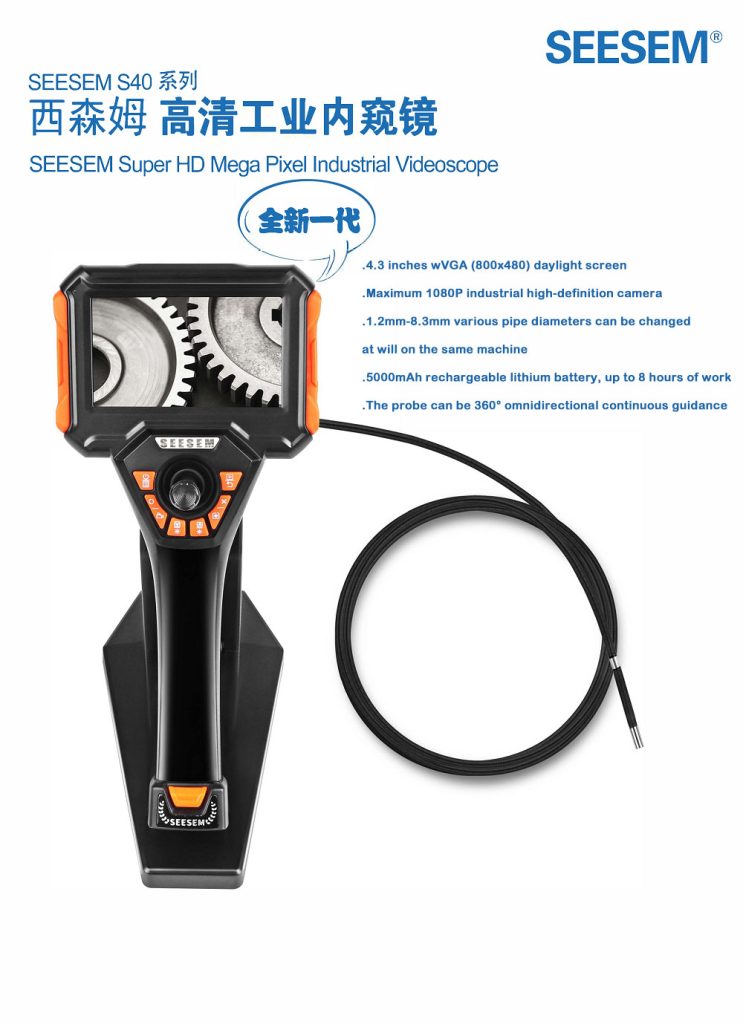Leading the Way: The Evolution of Industriële videoscoop Productie
Invoering:
In today’s rapidly evolving industrial landscape, niet-destructief onderzoek (NDT) has emerged as a critical component for ensuring the safety, reliability, and efficiency of various systems and structures. Among the innovative tools driving this advancement is the industrial videoscope, a versatile and indispensable instrument. In dit artikel, we delve into the world of industrial videoscope manufacturing, exploring its history, technological breakthroughs, applications, and the key players shaping this dynamic industry.
The Evolution of Industrial Videoscopes:
The inception of industrial videoscopes can be traced back to the mid-20th century, when the need for visual inspection of inaccessible areas arose in aerospace and automotive industries. Early videoscopes were rudimentary and lacked the advanced features we see today. Echter, rapid technological progress propelled the development of compact, high-resolution cameras and flexible insertion tubes, laying the foundation for modern industrial videoscopes.
Technological Breakthroughs:
Over the decades, industrial videoscope manufacturers have achieved remarkable advancements. Miniaturization of camera technology, coupled with the integration of powerful LED lighting, has enabled clear and detailed imaging in challenging environments. The introduction of articulating insertion probes revolutionized maneuverability, allowing for 360-degree rotational control and precise navigation through complex structures. Aanvullend, the incorporation of high-definition displays and wireless connectivity has transformed real-time remote inspection, empowering professionals to make informed decisions even from a distance.
Toepassingen in verschillende sectoren:
Industrial videoscopes have found applications across a diverse range of industries. In aviation, these tools are indispensable for inspecting turbine engines, aircraft structures, and avionics systems. The energy sector benefits from videoscopes during maintenance of pipelines, drukvaten, and nuclear facilities. Automotive manufacturing relies on videoscopes for quality control and examining engine components. Moreover, the healthcare industry has adopted videoscopes for minimally invasive medical procedures, further highlighting their versatility and impact.
Key Players and Innovators:
Several prominent manufacturers have played pivotal roles in shaping the industrial videoscope landscape. Companies like XYZ Technologies, InnovScope Inc., and VisionInspect Solutions have consistently pushed the boundaries of innovation. From enhancing probe durability to developing cutting-edge software for real-time analysis, these manufacturers have been at the forefront of delivering reliable and sophisticated solutions to meet the evolving needs of NDT professionals.
Looking Ahead:
As technology continues to evolve, the future of industrial videoscope manufacturing holds exciting possibilities. Anticipated developments include enhanced artificial intelligence integration for automated defect recognition, miniaturization for even more versatile applications, and improved connectivity for seamless data sharing and collaboration. These advancements are poised to revolutionize the way industries conduct inspections and maintenance, contributing to enhanced safety, reduced downtime, and increased operational efficiency.
Conclusie:
The journey of industrial videoscope manufacturing has been one of constant innovation and transformation. From humble beginnings, these tools have become indispensable assets across industries, providing invaluable insights into the integrity of structures and systems. As manufacturers continue to push the boundaries of what is possible, the future promises even more groundbreaking advancements that will reshape the landscape of non-destructive testing and inspection.


